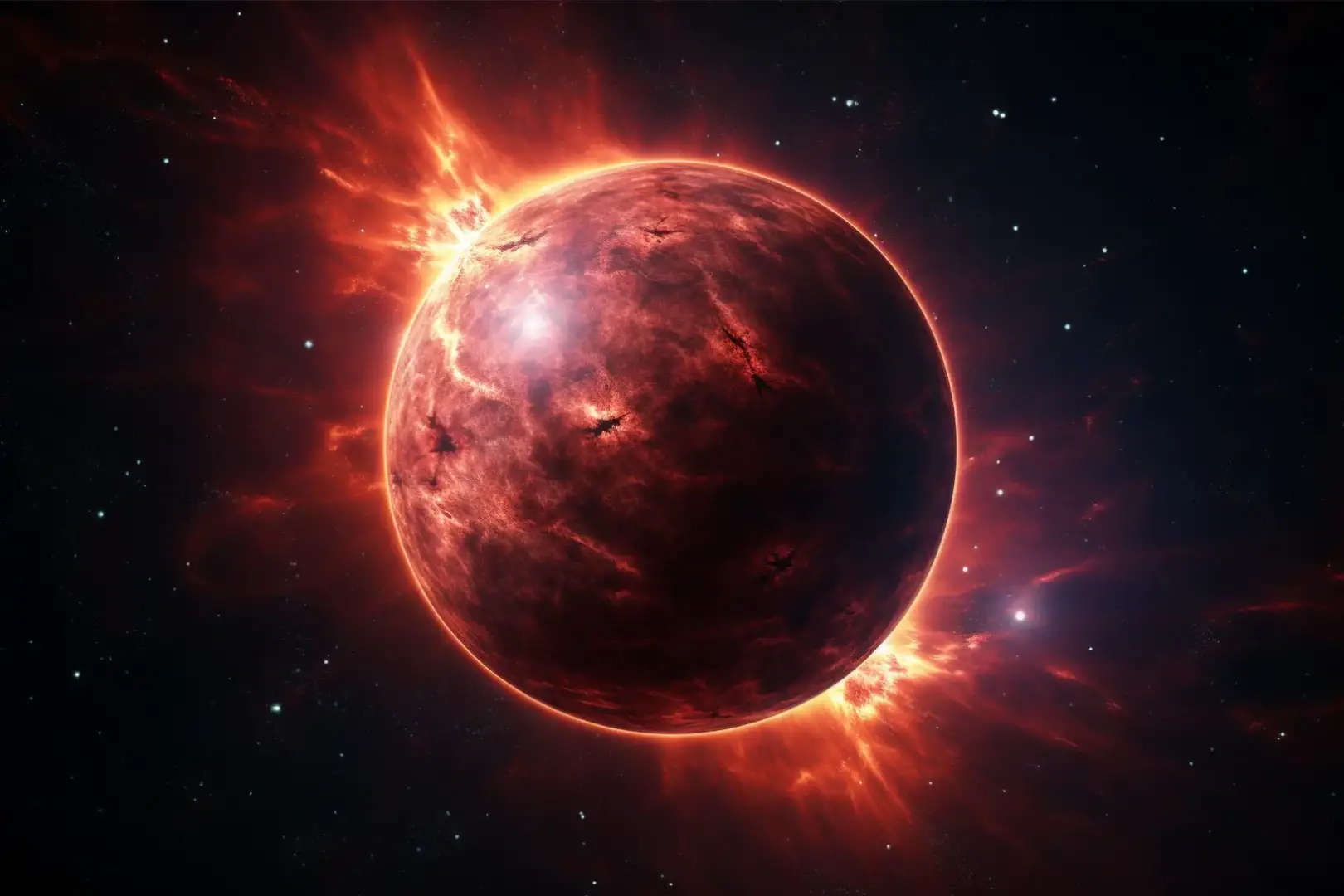Astronomers study coldest star emitting radio waves
- July 18, 2023
- 0
Cooler than a bonfire and smaller than Jupiter, this brown dwarf star is a rare find. Astronomers at the University of Sydney have studied the coldest star to
Cooler than a bonfire and smaller than Jupiter, this brown dwarf star is a rare find. Astronomers at the University of Sydney have studied the coldest star to

Cooler than a bonfire and smaller than Jupiter, this brown dwarf star is a rare find. Astronomers at the University of Sydney have studied the coldest star to emit radio waves, an extremely cold brown dwarf. This analysis helps to understand the evolution of stars and the formation of the magnetic field.
Astronomers at the University of Sydney have confirmed that a small, faint star holds the record for the coldest radiation at radio wavelengths. The object of their work is an “ultra-cold brown dwarf”, which is essentially a ball of gas, which is cooler than a regular campfire and does not burn nuclear fuel, boils at around 425 degrees Celsius (800 °F).
By comparison, the surface temperature of the Sun, a nuclear hell, is about 5,600 degrees Celsius (10,000°F). While not the coolest star ever discovered, it is the coolest star analyzed by radio astronomy.

Image showing the relative size of a typical brown dwarf star. In the sample star in this study, the brown dwarf is smaller than Jupiter (0.65 to 0.95 of its radius), but has a mass between four and 44 times that of Jupiter. Image credit: NASA/JPL
Covey Rose, lead author and graduate student in the School of Physics, noted: “It is very rare to find extremely cold brown dwarf stars that produce radio emission. This is because their dynamics do not produce magnetic fields that normally produce radio emissions detectable from Earth.
“Finding this brown dwarf that produces radio waves at such low temperatures is an extraordinary discovery.”
Rose believes that deepening our understanding of extremely cold brown dwarfs like these will help us understand the evolution of stars, particularly how they form magnetic fields.
How the internal dynamics of brown dwarfs sometimes generate radio waves remains an open question. While astronomers understand well how larger “main-sequence” stars like the Sun produce magnetic fields and radio emissions, it is still not fully understood why less than 10 percent of brown dwarf stars produce such emissions.
The rapid spin of the extremely cold dwarfs is hypothesized to play a role in creating their strong magnetic fields. When the magnetic field rotates at a different rate than the dwarf’s ionized atmosphere, it can produce an electric current.
For this particular case, there is a theory that radio waves are produced by the flow of electrons towards the magnetic pole region of the star. This process, combined with the rotation of the brown dwarf star, results in regularly repeating radio bursts.
Brown dwarf stars, often called so because of their limited energy or light output, are not large enough to cause the nuclear fusion associated with other stars like our Sun.
Mr. Rose emphasized: “These stars are the missing link between the smallest stars that burn hydrogen in nuclear reactions and the largest gas giants like Jupiter.”
Known colloquially as T8 Dwarf WISE J062309.94−045624.6, the star is located about 37 light-years from Earth and was discovered in 2011 by astronomers at the California Institute of Technology in the United States.
The radius of the star is 0.65 to 0.95 of that of Jupiter. Its mass cannot be determined very precisely, but it is at least four times the mass of Jupiter, but not more than 44 times. On the contrary, the Sun is 1000 times heavier than Jupiter.
Mr Rose analyzed the star using new data from the CSIRO ASKAP telescope in Western Australia and observations from the Australian Telescope Compact Array near Narrabri in New Wales and the MeerKAT telescope in South Africa.
Professor Tara Murphy, head of the University of Sydney School of Physics and co-author, said: “We have just started full ASKAP and are already finding many interesting and unusual astronomical objects like this one.
“If we open this window in the radio sky, we will better understand the stars around us and the potential habitability of the exoplanet systems they contain.” Source
Source: Port Altele
As an experienced journalist and author, Mary has been reporting on the latest news and trends for over 5 years. With a passion for uncovering the stories behind the headlines, Mary has earned a reputation as a trusted voice in the world of journalism. Her writing style is insightful, engaging and thought-provoking, as she takes a deep dive into the most pressing issues of our time.